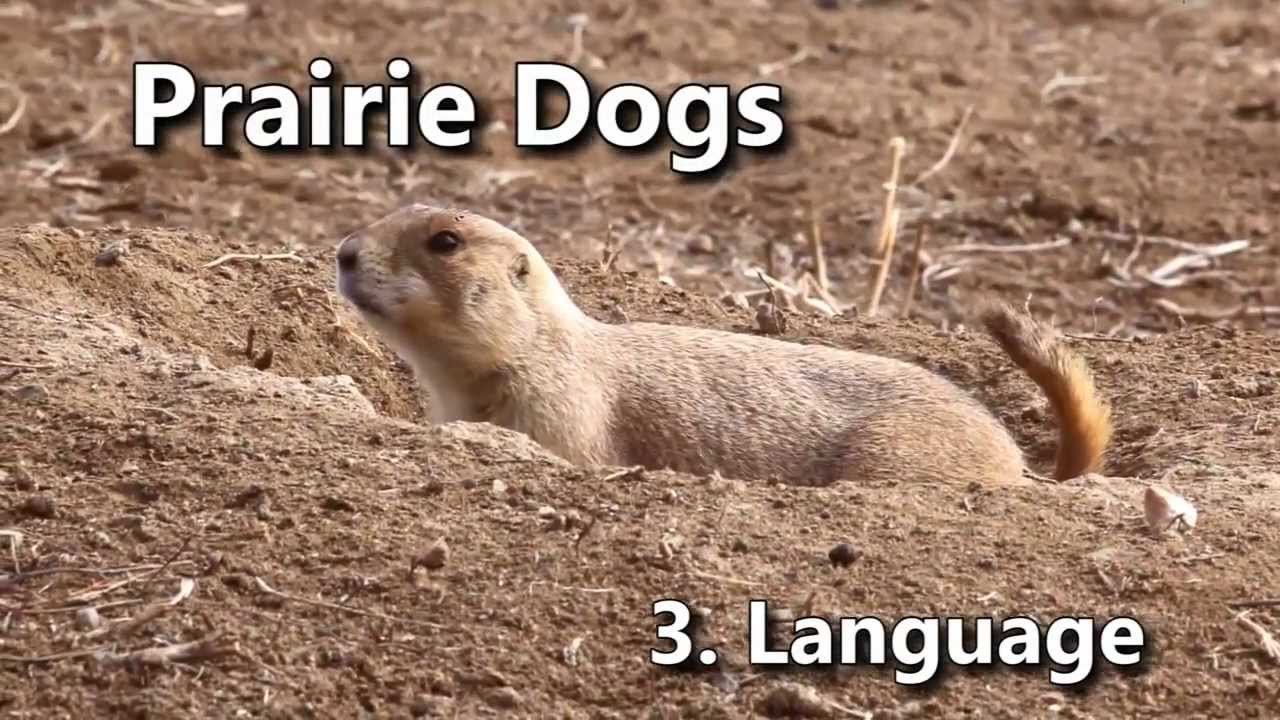This program discusses Prairie Dog Language — the most sophisticated animal language decoded so far. Con Slobodchikoff, Ph.D., and his students at Northern Arizona University in Flagstaff, researched the Gunnison’s prairie dogs Alarm Calls for over 30 years to decode their language. Sonograms of all 5 species of prairie dogs suggest that they would not understand each other and each species has their own language. Each species also has Regional and Local Dialects.
There are 5 species of prairie dogs; the Black-tailed prairie dogs and the Mexican prairie dogs are the black-tailed group who have black tail tips, and the Gunnison’s prairie dogs, the White-tailed prairie dogs, and the Utah prairie dogs are the white-tailed group who have white tail tips.
All prairie dogs live in the grasslands of western central North America, and all are social. They live in relative harmony within their social groups. All of the species are similar in their social behavior, although the black-tails are somewhat more social than the white-tails. Learn about a type of hibernation called Torpor that prairie dogs employ. See pups before they emerge from their natal burrows as well as in different stages of life (an average prairie dog lives 3-4 years), rare above ground mating, a lot of greet-kissing, territorial behavior from fighting and aggressive chases to social structure based on plant food sources on each territory, mutual grooming, and prairie dog personalities!
Prairie dogs are considered Keystone Species of their grassland ecosystems — some 200 vertebrate species and a number of invertebrate species of animals depend on them for food or for their burrows. Prairie dogs survive in 1-2% of their historic range of habitat. Their numbers have declined drastically over the past 100 years to 1-2% of the number of animals there were historically. Agriculture, land development, target shooting and disease are the primary reasons for their continuing decline.
The Mexican prairie dogs are listed as Endangered (under the Convention on International Trade in Endangered Species — CITES, as well as recognized by the Mexican government as at high risk of extinction), but are still being killed primarily for agricultural land interests. The Utah prairie dogs are listed as Threatened (under the United States’ Endangered Species Act — ESA), but they are being killed due to land development. The other three species need to be listed also in order to have some protection under the law. The Gunnison’s prairie dogs are currently under review for listing under the ESA.
A number of prairie animals are at risk of extinction (as well as prairie dogs themselves) because prairie dog numbers are so low. Five animals that are dependent on prairie dogs and are at highest risk are Black-Footed Ferrets, Swift Foxes, Mountain Plovers, Burrowing Owls and Ferruginous Hawks.
language
1306616504
2011-05-28 21:01:44
8:57
UCCVQhXKbVBqkWZ_D_h-Gp1g
prairiedogchatter
1136
11
source

